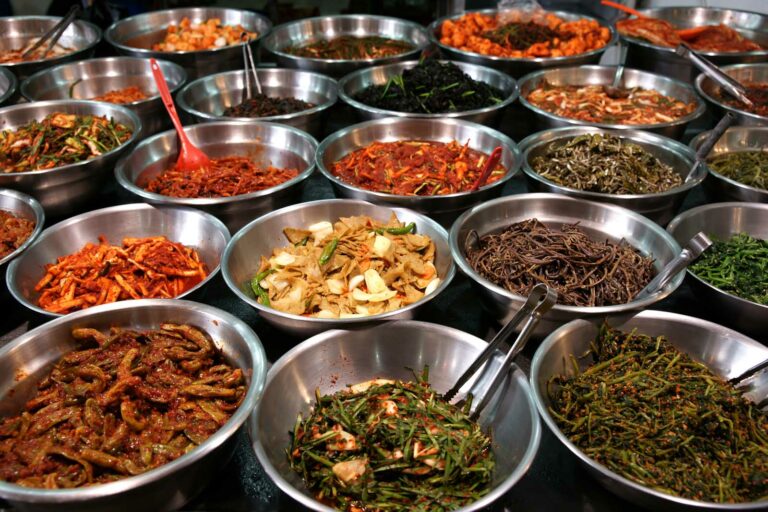Introduction: South Korean cuisine and its influences
South Korean cuisine is known for its unique flavors and diverse range of dishes. Influenced by various cultures and regions, South Korean cuisine has been shaped by the country’s geography and history. The Korean Peninsula has been a crossroads for many civilizations, and as a result, Korean cuisine has absorbed influences from China, Japan, and other neighboring countries. In this article, we will explore some of the South Korean dishes that have been influenced by Chinese or Japanese cuisine.
Chinese-influenced dishes in South Korea
Chinese cuisine has had a significant impact on South Korean cuisine. Chinese-style dishes have become popular in South Korea, with many restaurants specializing in Chinese-Korean fusion cuisine. Some of the popular Chinese-influenced dishes in South Korea include Jajangmyeon and Tangsuyuk.
Jajangmyeon: a popular Chinese-Korean dish
Jajangmyeon is a Korean-Chinese dish that originated in China’s Shandong province. The dish consists of noodles topped with a thick, savory black bean sauce made from fermented soybeans, pork, and vegetables. In South Korea, Jajangmyeon is typically served with diced raw onions and a small bowl of danmuji, a pickled radish dish. This dish has become a staple in South Korean cuisine, often served for special occasions such as birthdays and graduations.
Tangsuyuk: a sweet and sour Chinese-style pork dish
Tangsuyuk is a Chinese-style pork dish that has become popular in South Korea. The dish consists of deep-fried pork that is then coated in a sweet and sour sauce. The sauce is made from sugar, vinegar, ketchup, and cornstarch, and often includes vegetables such as onions and peppers. Tangsuyuk can be served as a main dish or as a side dish along with Jajangmyeon.
Japanese-influenced dishes in South Korea
Japanese cuisine has also had an influence on South Korean cuisine. Japanese dishes such as sushi and tempura are popular in South Korea, but there are also Korean dishes that incorporate Japanese flavors and ingredients. One such dish is Bibimbap.
Bibimbap: a Korean dish with Japanese elements
Bibimbap is a Korean rice dish that typically includes sautéed vegetables, meat, and a fried egg, all served over a bed of white rice. The dish is often served with gochujang, a spicy red pepper paste, and sesame oil. In some variations of Bibimbap, Japanese ingredients such as nori (dried seaweed) and shiitake mushrooms are used. The Japanese-style Bibimbap may also include raw fish or seafood, giving the dish a different flavor profile than traditional Bibimbap.
In conclusion, South Korean cuisine has been influenced by various cultures, including Chinese and Japanese cuisine. Jajangmyeon and Tangsuyuk are popular Chinese-Korean dishes, while Bibimbap is a Korean dish that incorporates Japanese flavors and ingredients. These dishes are a testament to the rich history and diverse culinary traditions of South Korea.

